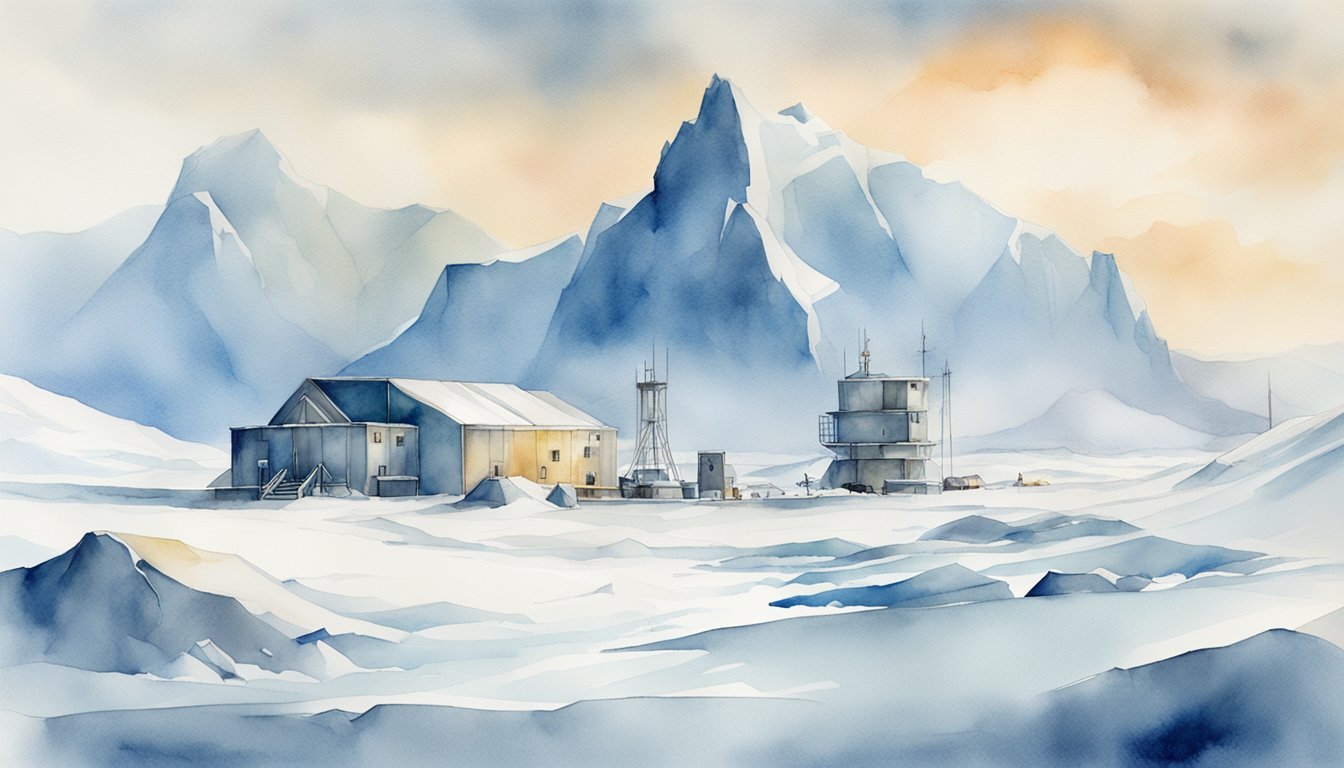Race to the South Pole
The early 20th century witnessed a gripping competition between two teams led by Roald Amundsen from Norway and Robert Falcon Scott from England. Their aim was singular: to be the first humans to reach the Geographic South Pole. This infamous race stands as a hallmark in the Heroic Age of Antarctic Exploration.
Roald Amundsen’s Journey
Amundsen’s expedition capitalized on experience from the polar veteran Fridtjof Nansen and embarked on the ship Fram. They established a base camp, which they named Framheim, on the edge of the Ross Ice Shelf. Leveraging the expertise of ski champions like Olav Bjaaland and polar knowledge of the crew, which included Oscar Wisting, Helmer Hanssen, and Sverre Hassel, this Norwegian team made strategic use of sledges and dogs to navigate the treacherous Antarctic terrain. On December 14, 1911, Amundsen and his crew triumphantly stood at the geographical South Pole, a feat meticulously recorded in Amundsen’s diary.
Robert Falcon Scott’s Expedition
Scott’s Terra Nova Expedition was launched with much fanfare from England. Their journey, using motor sledges, ponies, and dogs, proved slower than the Norwegians. On January 17, 1912, Scott and his team reached the South Pole, only to find the Norwegian flag left by Amundsen’s team. The return was tragic; harsh weather and starvation led to the demise of Scott and his expedition members. Their story highlights the perilous nature of Antarctic exploration.
Technological and Environmental Challenges

Exploring the Antarctic and Arctic regions has presented numerous technological and environmental challenges that have pushed the limits of human innovation and endurance. The severe conditions demanded significant advancements in equipment, while the harsh environmental factors necessitated strategies for survival.
Advancements in Polar Equipment
The exploration of polar regions required specialized equipment. Sleds were essential for transporting supplies and were often pulled by sled dogs, which were more reliable than mechanical modes of transportation during the early expeditions. However, technological innovations eventually ushered in the use of airplanes and dirigibles for exploration and supply drops. One notable figure, Richard E. Byrd, used an airplane to fly over the South Pole, while Umberto Nobile utilized a dirigible to reach the North Pole. The Belgian Antarctic Expedition marked one of the earliest uses of the instructional kayak for scientific investigation.
Environmental Hardships and Survival
The environmental conditions in the polar regions are famously brutal. Expeditions had to contend with blizzards, the vast ice barrier, extreme elevations like those found at the Beardmore Glacier, and months of perpetual daylight or darkness in the Antarctic summer. Navigating these obstacles while avoiding frostbite and starvation were monumental feats. Pioneering explorers like Amundsen and Scott faced these hardships directly as they journeyed toward the South Pole through the Ross and Weddell Seas, with only their physical endurance and limited period clothing and sustenance. Edward Wilson, part of Scott’s team, also endured these challenges on their fateful expedition. Ernest Shackleton’s account of survival against all odds in the Antarctic continues to be a symbol of human resilience in the face of seemingly insurmountable environmental adversities.

